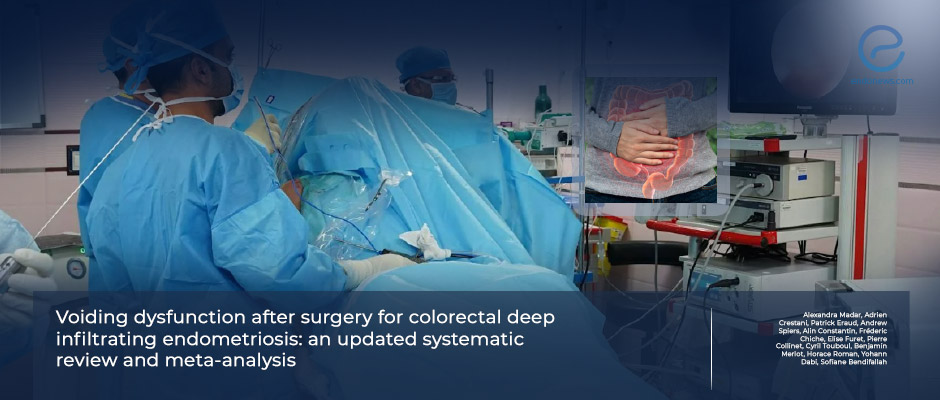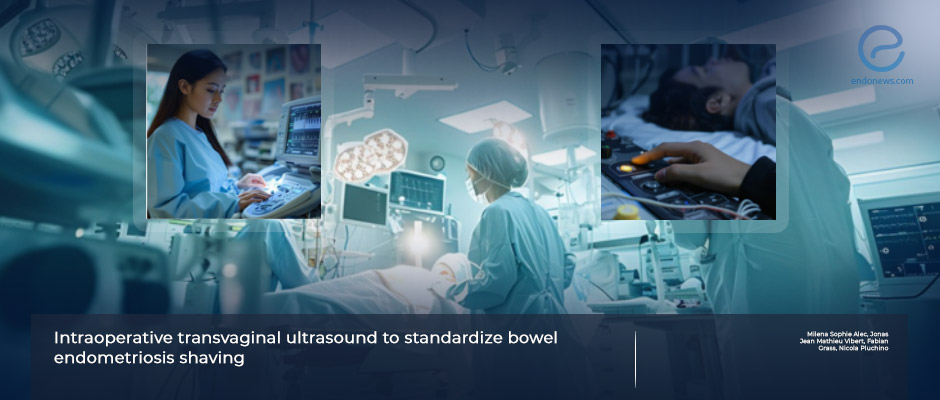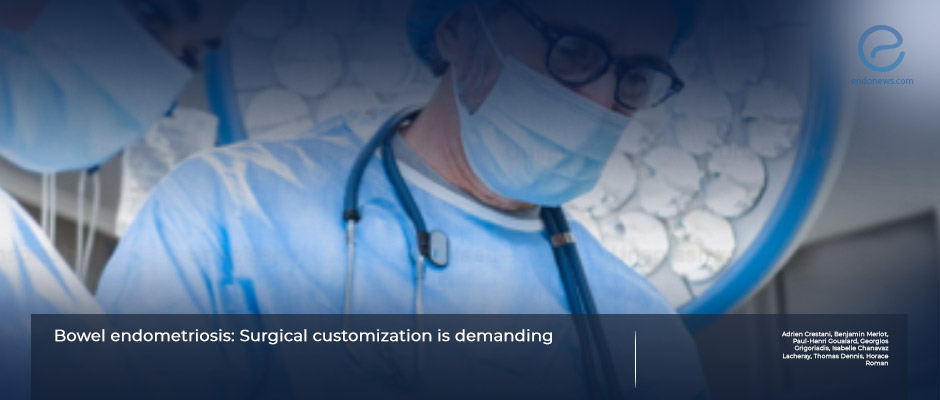Conservative Bowel Surgery Should Be Prioritized in Endometriosis When Clinically Feasible
A recent study published in Updates in Surgery shows that conservative bowel surgery is associated with lower rates of post-operative voiding dysfunction in patients with endometriosis. Based on these findings, conservative approaches such as rectal shaving and discoid excision should…
Key Points Lay SummaryIntraoperative Transvaginal Ultrasound-Guided Resection of Bowel Endometriosis
Alec et al. from the Department of Obstetrics and Gynecology at Geneva University Hospitals aimed to show how to manage rectal endometriosis using ultrasound in a narrative video. The main goal of their procedure was to check the rectal wall…
Key Points Lay SummaryPersonalized Surgical Strategies for Bowel Endometriosis to Enhance Patient Outcomes
Bowel endometriosis often impacts the rectum or sigmoid colon, causing significant symptoms and reducing fertility. Treatments include hormonal therapy and surgery, with techniques varying widely. Crestani et al., in the leadership of Dr. Horace Roman, conducted a study aiming to…
Key Points Lay SummaryRobot-assisted laparoscopy for deep infiltrating endometriosis of bowel
Deep infiltrating endometriosis is characterized by lesions larger than 5 mm that penetrate the peritoneum or invade the muscular layer of adjacent organs, affecting over 20% of women with endometriosis. Bowel involvement occurs in 5-12% of cases and may present with…
Key Points Lay SummaryWhich surgery for deep endometriosis? Laparoscopic shaving or rectal resection?
This keynote lecture entitled "Deep endometriosis: The place of laparoscopic shaving" was presented by Dr. Jacques Donnez, the director of the infertility research unit at the Catholic University of Louvain, Brussels, Belgium, at the Annual International Medical Conference of the Endometriosis Foundation…
Key Points Lay SummaryLaparoscopic resection of bladder endometriosis
When we talk about deep-infiltrating endometriosis, one of the most commonly affected organs in the urinary tract is the bladder, with a prevalence of 80%. Bladder endometriosis can be defined as the existence of the endometrial glands and stroma inside…
Key Points Lay SummaryPostoperative outcomes of deep intestinal endometriosis surgery.
Invasion of endometriotic lesions to the bowels' mucosal and/or muscular levels is called intestinal deep endometriosis. These lesions are most frequently found in the rectosigmoid colon, followed by the rectum, ileum, appendix, and caecum. The optimal surgical approach to intestinal deep…
Key Points Lay SummaryNot just the pain stops but also the bowel function improves after DIE surgery
Bowel endometriosis and the techniques to operate it have always been a challenge. The study conducted by Beraldo et al., from Brazil, highlighted the results of an effective nerve-sparing bowel surgery on endometriosis lesions and its long-term effects on patients. The…
Key Points Lay SummaryWhich surgical approach for bowel endometriosis?
A group of researchers from Spain, led by Dr. Alicia Hernández Gutiérrez, conducted a retrospective study to compare postoperative complications and recurrence of three surgical techniques: segmental bowel resection (group I), discoid excision (group II), and rectal nodule shaving (group…
Key Points Lay SummaryThe postoperative functional outcomes of deep infiltrating endometriosis
Rectosigmoid endometriosis is defined as the infiltration of the bowel wall with the endometrial-like glands and stroma, reaching at least the muscular layer. The most commonly involved sites are the rectum and sigmoid colon. For the management of deep infiltrating…
Key Points Lay SummaryBladder Endometriosis
Bladder endometriosis is rare – about 1-2% of women with endometriosis may have endometrial lesions in their urinary tract. Diagnosis of bladder endometriosis is difficult because of its nonspecific symptoms such as frequent urination, pelvic pain, and burning sensation when…
Key Points Lay SummaryChoosing the Right Technique for Deep Colorectal Endometriosis
Endometriosis is a benign gynecologic condition, histologically defined by the presence of ectopic endometrium outside the endometrial cavity. Three clinical presentations of endometriosis have been described and could coexist in the pelvis: peritoneal endometriosis, ovarian endometriosis, and deep infiltrating endometriosis.…
Key Points Lay SummaryPreoperative factors to predict unresponsiveness in women undergoing endometriosis surgery
Endometriosis is defined as the localization of endometrial glandular and stromal cells outside the uterine cavity. Despite extensive research, the optimal management of endometriosis still remains unclear. Several treatment options include analgesic medication, hormonal treatments, and surgical intervention. There is…
Key Points Lay SummarySurgical techniques for rectosigmoid endometriosis, and functional outcomes
Rectosigmoid endometriosis is defined as the infiltration of bowel wall with the endometrial-like glands and stroma, reaching at least the muscular layer. Rectosigmoid endometriosis is encountered in approximately 8-12% of patients with a diagnosis of endometriosis. The most commonly involved…
Key Points Lay SummaryConservative Surgery May Be Sufficient to Halt the Development of Deep Endometriosis
Deep endometriosis develops as a result of collective cell migration and nerve recruitment from surrounding organs, suggests a study published in the scientific journal Fertility and Sterility. Collective cell migration is the biological process whereby a group of cells moves…
Key Points Lay Summary
 By Özge Özkaya
By Özge Özkaya

 By Selma Oransay
By Selma Oransay

 By Eylül GÜN
By Eylül GÜN





 By Bahar Yuksel
By Bahar Yuksel

 By Irem Onur
By Irem Onur

 By Hale Goksever Celik
By Hale Goksever Celik

 By Demet Candaş Green
By Demet Candaş Green

 By Dr. Youngran Park
By Dr. Youngran Park


